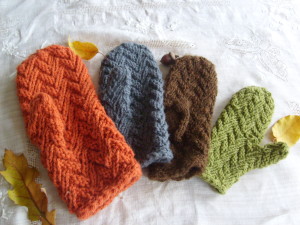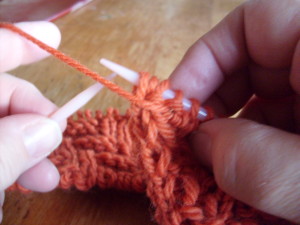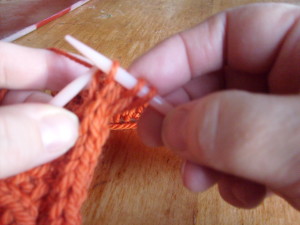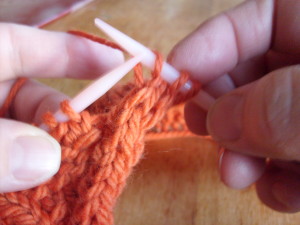
The Herringbone Toque, Herringbone Cowl, and Herringbone Mittens are all knit on the bias with i-cord edging. I’ve had some pattern support questions about the edging, so I thought I’d shoot some photos so you can see the big picture before following the line by line instructions; because even if you know that after a lot of repetition a new technique will make sense, it’s a whole lot nicer if you don’t have to wait.

The bias edging needs to be longer than the rest of the fabric; because the fabric is being increased, but the edging is still being build row by row, and the legs of a right angle triangle are always shorter than the hypotenuse.
When you reach the i-cord edge, slip 3 stitches with yarn in front, turn.
Knit 3, do not turn.

Slip 3 sts back onto the left needle with yarn in back. Do not turn.

Knit 3, continue on with the rest of the fabric.

